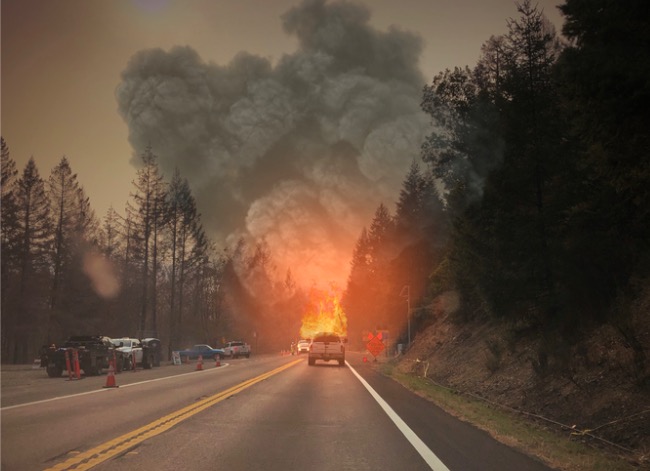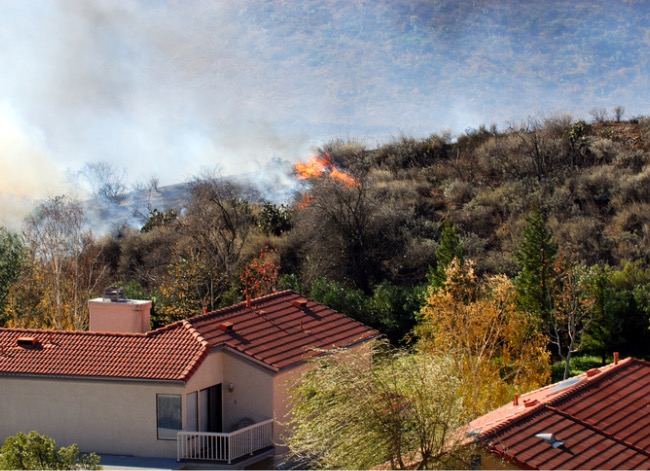

We may earn revenue from the products available on this page and participate in affiliate programs. Learn More ›
The damage caused by wildfires can be absolutely devastating. According to a 2020 study by the nonprofit research group Headwater Economics, wildfires destroyed nearly 89,000 structures between 2005 to 2020. Worse yet, 62 percent of the losses occurred in 2017, 2018, and 2020 alone.
While wildfires might seem unstoppable (and in many ways, they are), there are ways to protect your property from fire damage. With the right information and a proactive approach, anyone can take steps toward safeguarding their homes.
Clear Brush and Dead Vegetation
In some parts of the world, wildfires also are known as brush fires because they feed on the dead brush, vegetation, and trees in drier regions. One way to slow a wildfire’s approach is to keep the property clear of those combustible materials. Cutting down dead trees as well as removing dead brush, grass, leaves, and other debris will provide less fuel for a wildfire, slowing its approach across the property.
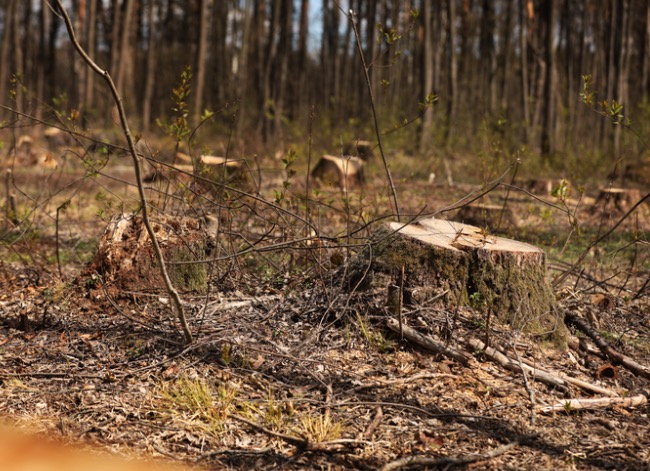
Create a Defensible Zone
Creating a defensible zone around your property is one of the best strategies to lessen a home’s risk during a wildfire. This zone includes everything within a 100-foot radius of the house, and it’s best to break the property into smaller, manageable zones:
- Zone 1 includes 0 to 5 feet from the house. Remove combustible outdoor furniture, fences, and storage under decks from this area. Also, use hardscape and concrete to create fuel breaks. Be sure to remove any dead plants and keep the plants in this zone irrigated.
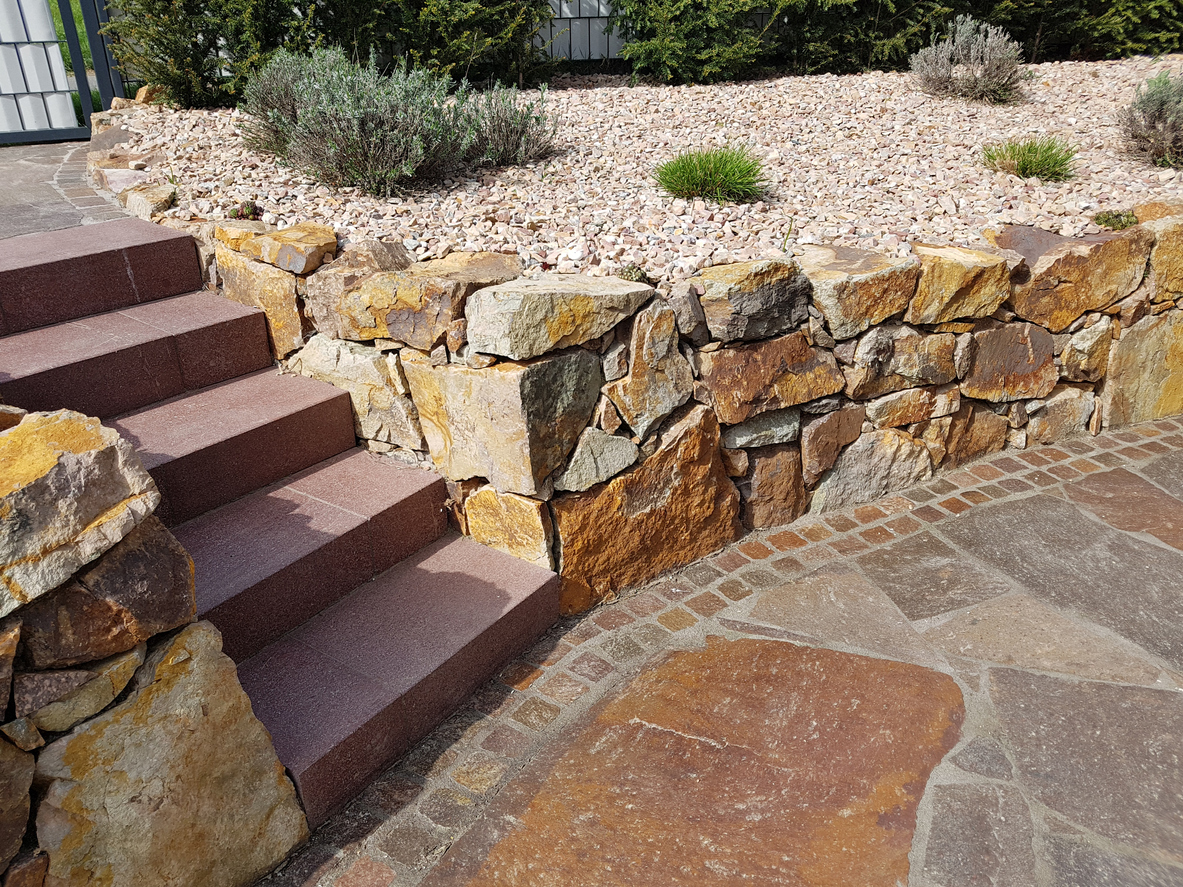
- Zone 2 covers the area 5 to 30 feet from the house. Remove dead brush, maintain 18 feet of space between tree crowns, and plant trees and vegetation in small clusters.
- Zone 3 includes 30 to 100 feet out, and it’s important to keep these trees trimmed and the zone free of brush as well. Also, remove any small evergreen trees growing between mature trees, as they’re full of combustible pitch.
The National Fire Protection Association (NFPA) publishes a guide to defensible zones that contains additional useful information on the topic.
Protect Your Roof
Since flying embers from wildfires are often the causes of structure fires, protecting the roof is key. Using Class A-rated shingles will help to lessen the chances that an ember landing on the roof causes a fire.
The good news is that your roof might already be Class A-rated; most asphalt shingles are Class A-rated, and all metal roofing is Class A-rated. While these shingles won’t fireproof the home, they offer protection for its most vulnerable surface.
Keep Embers Out of Vents and Windows
Flying embers are just as likely to float into open windows, cracks in vents, and open eaves. If the threat of a wildfire approaches, it’s important to safeguard these areas from danger. Sealing off attic vents and windows with ⅛-inch metal screening will prevent embers from floating in while still allowing airflow. As for exposed rafter tails and open eaves, it’s best to box them in even though it will affect the aesthetics of the home.
If a fire approaches and you are told to leave or feel threatened, be sure to close all windows and doors and leave them unlocked. If you have time, remove flammable window coverings and move flammable furniture away from windows and doors.
Work With Your Neighbors
You can take all the precautions in the world to protect your property from wildfires, but if you live in a densely populated area, your home is only as safe as your neighbors’ homes. Work with your neighbors to create safer yards and ultimately a safer neighborhood by following these protocols on their properties as well.
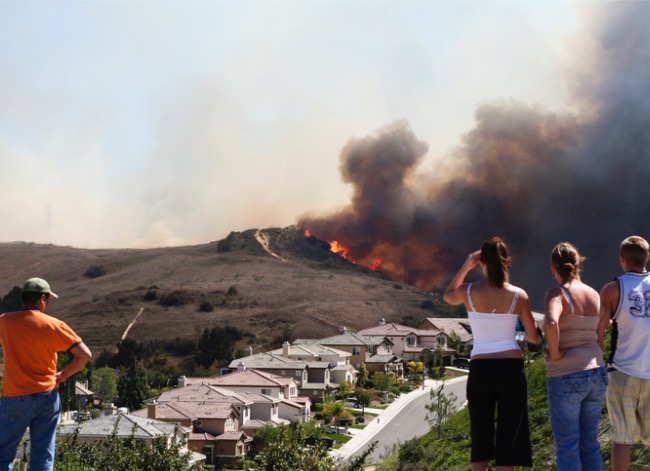
Prepare Your Escape Route
If you’re told to evacuate, ignoring the evacuation order and staying at home puts you, your family, and the crews responding to the fire at unnecessary risk. Instead, prepare an escape route. Keep your vehicle full of fuel and prepare a bag with some necessities. Also, know a few different ways out of your neighborhood to ensure you can escape regardless of the fire’s direction.
The smoke from nearby wildfires can reach across several states and affect air quality. Consider purchasing an air purifier before a local or regional wildfire starts to ensure your breathing air is safe while at home and when you return after evacuating.
